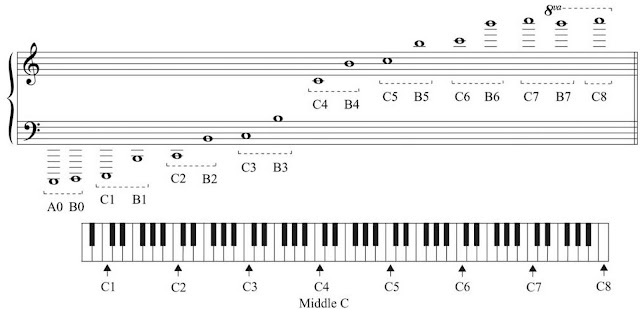Movie review score
5
If you haven't check Music Notation Made Simple Part 1 I suggest you check that out before having any plans on reading this section. Of course there is always an exemption, if you happen to already have some knowledge on the basics of music notation, you are more than welcome to read this chapter.
Have Fun!
After years of teaching music, I found a technique of learning how to read music in a simple way. It works for me, it doesn't mean it's the only way. Haha too much ways to say there, I would be more than happy to share how I teach music in my own way!
TECHNIQUES IN READING AND IDENTIFYING LETTERS ON THE STAFF
We have already discussed about the letter names in a previous chapter, so we are now ready to take the next step in using them.
Letter names have equivalent singing names or the solfa syllables which is use more often in singing lessons than on this one. For uniformity purposes we will be using letter names (C D E F G A B) instead of singing names (Do Re Mi...).
READING NOTES ON THE G STAFF
For notes on lines of a treble clef just remember the words Every Good Boy Does Fine. Taking only every first letter of each word would give us the notes on the lines of a G staff.
As for the notes on the spaces of a G staff, we just remember the letters that form the word FACE.
NOTE: THIS METHOD IS ONLY FOR NOTES WITHIN THE STAFF AND NOT BEYOND OR BELOW THE STAFF, WE HAVEN'T TOUCH THE TOPIC ON LEDGER LINES YET
Moving on to the F staff, remember the words, Good Boys Do Fine Always for the notes on the lines of a F staff
and remember ACEG (you can give any meaning for this one) for notes on the spaces of a F staff.
That wasn't so hard I'm sure. The moment you determine a note on the staff, it is then very easy to identify the notes below or above that note. It is one step of identifying the notes on a staff.
Note: The higher the position of a note on a staff, the higher its pitch is. The lower its position on the staff, the lower its pitch is.
Ledger Lines
- are lines located above and below the staff. Its purpose is to guide you when reading notes that are above or below the staff. Without these lines it would be very hard to distinguish notes above or below the staff.
| Notes extending above and below the G staff |
| Notes extending above and below the F staff |
Exercise
Try to answer this exercise to test what you have learned so far. For more exercises, you can go to exercise page of this blog.
The Grand Staff
- when you connect the G staff and the F staff you get what we call the Grand Staff.
In piano music, the treble staff is played by the right hand while the bass staff is played by the left hand
Watch the video of a piano excerpt of Bach's Courante from French Suite No.2
This is an example of a Grand Staff use for Four Part Chorale Writing
In four part chorale writing, the treble staff is use for the Sopranos and the Altos while the bass staff is use for the Tenors and the Basses.
Octave Identification
- the word octave means a series of eight (8) notes, 7 of which are unique and 1 is a repetition of the first
- if you think I lost you there, then this image might help you understand what an octave is
- because the pitch spectrum is so wide, one must be able to identify a specific note by the octave in which it appears.
Now let us view the whole spectrum of pitches in different octaves and identify where our middle C is located.
As you can see base on the figure above, each tone has a certain octave, specific to itself, although you may find C a lot of times, but each C is a different and unique C. That is true to all pitches on the spectrum. This octave identification is approved by the International Acoustical Society. You may want to google the Helmholtz System, this is a derivation of that famous acoustic system.
Accidentals
- are symbols that you place to the left of the note head, that is before the note head, to indicate the raising or lowering of a pitch.
Sharp sign raises the pitch of a note a half step and looks like this
Flat sign lowers the pitch of a note and looks like this
Double sharp sign raises the pitch of a note a whole step and a Double flat lowers the pitch of a note a whole step. Both of these are shown below
This is how you use these accidentals when you write music
Click play to hear the image
Interval
- is the relationship between two tones or the distance between two distinct pitches. In western music, the smallest interval is a half step, in the keyboard, it will be two adjacent keys.
Listen how these half steps sound like
Enharmonic Equivalents
- are tones that have the same pitch but spelled differently or have different letter names
Half step motion
- in music passages involving a half step motion, often a flatted note is followed by a note that is spelled differently and is a half step lower.
a sharp note is usually followed most often with a note a half step higher and spelled differently.
That ends our part 2 of this chapter, please proceed to part 3









